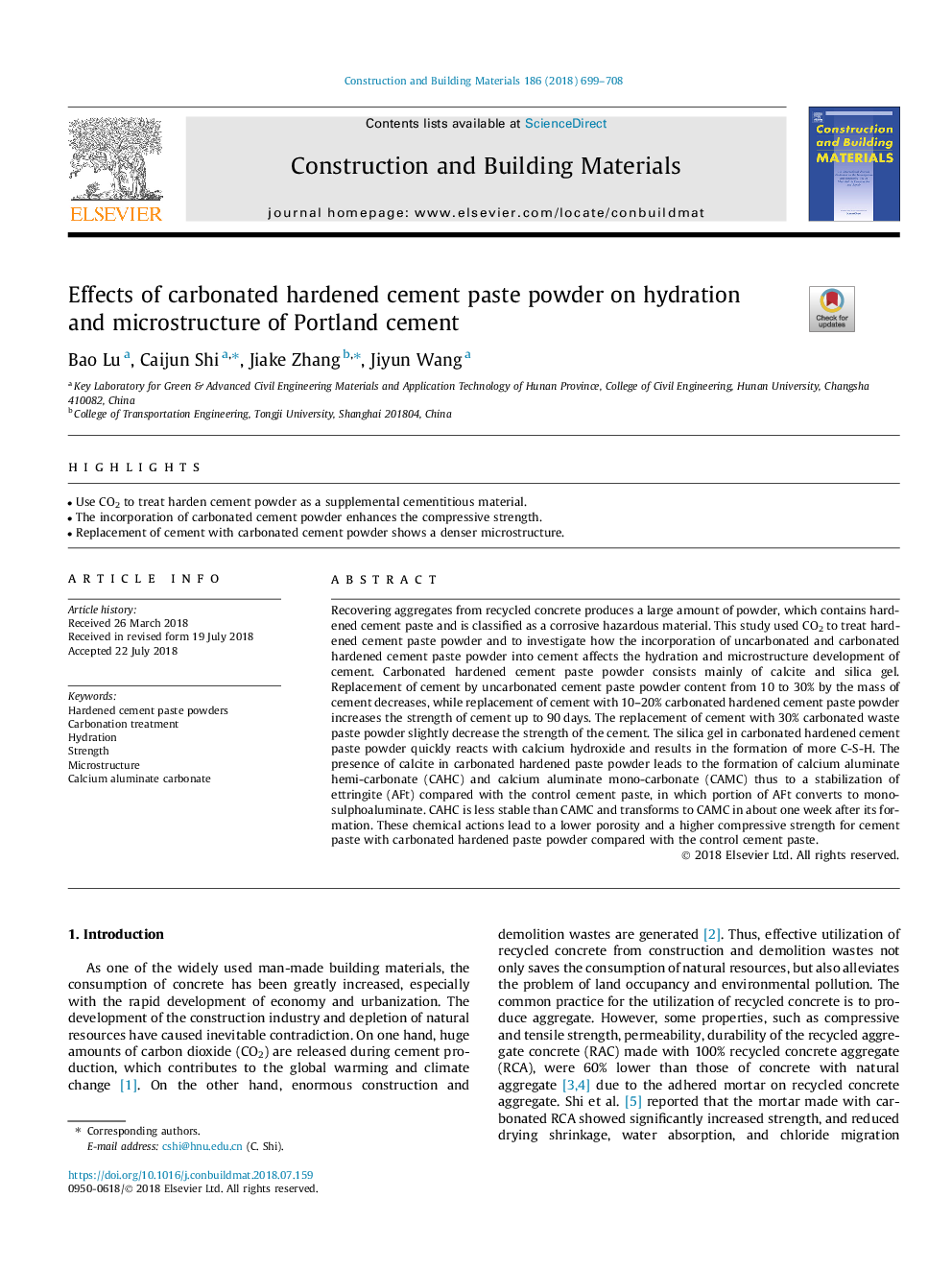| Article ID | Journal | Published Year | Pages | File Type |
|---|---|---|---|---|
| 6711773 | Construction and Building Materials | 2018 | 10 Pages |
Abstract
Recovering aggregates from recycled concrete produces a large amount of powder, which contains hardened cement paste and is classified as a corrosive hazardous material. This study used CO2 to treat hardened cement paste powder and to investigate how the incorporation of uncarbonated and carbonated hardened cement paste powder into cement affects the hydration and microstructure development of cement. Carbonated hardened cement paste powder consists mainly of calcite and silica gel. Replacement of cement by uncarbonated cement paste powder content from 10 to 30% by the mass of cement decreases, while replacement of cement with 10-20% carbonated hardened cement paste powder increases the strength of cement up to 90â¯days. The replacement of cement with 30% carbonated waste paste powder slightly decrease the strength of the cement. The silica gel in carbonated hardened cement paste powder quickly reacts with calcium hydroxide and results in the formation of more C-S-H. The presence of calcite in carbonated hardened paste powder leads to the formation of calcium aluminate hemi-carbonate (CAHC) and calcium aluminate mono-carbonate (CAMC) thus to a stabilization of ettringite (AFt) compared with the control cement paste, in which portion of AFt converts to mono-sulphoaluminate. CAHC is less stable than CAMC and transforms to CAMC in about one week after its formation. These chemical actions lead to a lower porosity and a higher compressive strength for cement paste with carbonated hardened paste powder compared with the control cement paste.
Related Topics
Physical Sciences and Engineering
Engineering
Civil and Structural Engineering
Authors
Bao Lu, Caijun Shi, Jiake Zhang, Jiyun Wang,
